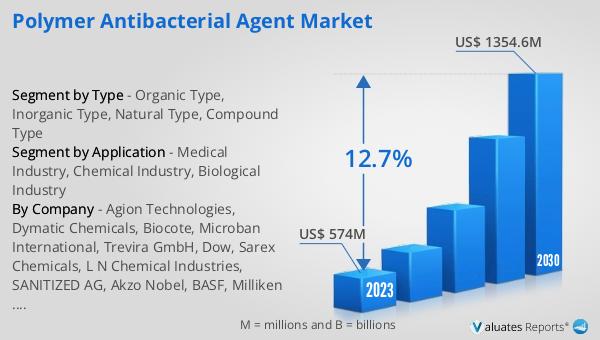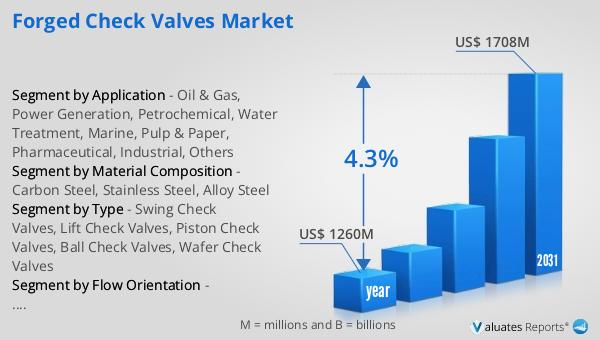What is Global Polymer Antibacterial Agent Market?
The Global Polymer Antibacterial Agent Market refers to the worldwide industry focused on the production and distribution of polymer-based materials that possess antibacterial properties. These agents are incorporated into polymers to inhibit the growth of bacteria, thereby enhancing the hygiene and safety of various products. The market encompasses a wide range of applications, including medical devices, packaging materials, textiles, and consumer goods. The demand for polymer antibacterial agents is driven by increasing awareness of hygiene and health, stringent regulations regarding microbial contamination, and the growing need for durable and long-lasting antibacterial solutions. These agents are particularly valuable in environments where maintaining sterility and cleanliness is crucial, such as hospitals, food processing units, and public spaces. The market is characterized by continuous innovation and development, with companies investing in research to create more effective and sustainable antibacterial polymers. As a result, the Global Polymer Antibacterial Agent Market is poised for significant growth, driven by advancements in technology and the rising demand for antimicrobial products across various industries.

Organic Type, Inorganic Type, Natural Type, Compound Type in the Global Polymer Antibacterial Agent Market:
Polymer antibacterial agents can be categorized into four main types: Organic, Inorganic, Natural, and Compound. Organic types are typically carbon-based compounds that include a variety of chemical structures such as quaternary ammonium compounds, triclosan, and biguanides. These agents are known for their effectiveness in disrupting bacterial cell membranes and inhibiting microbial growth. Inorganic types, on the other hand, often involve metals and metal oxides like silver, copper, and zinc. These materials release ions that are toxic to bacteria, thereby providing long-lasting antibacterial effects. Natural types are derived from natural sources such as plants, animals, or microorganisms. Examples include chitosan, which is obtained from the shells of crustaceans, and essential oils like tea tree oil and eucalyptus oil. These natural agents are gaining popularity due to their biodegradability and lower environmental impact. Compound types are a combination of two or more antibacterial agents, which can be either organic, inorganic, or natural. The synergistic effect of combining different agents can enhance the overall antibacterial efficacy and broaden the spectrum of activity. Each type of polymer antibacterial agent has its own set of advantages and limitations, making them suitable for different applications depending on the specific requirements. For instance, organic agents are often used in medical devices and textiles due to their strong antibacterial properties, while inorganic agents are preferred in packaging materials for their durability and long-lasting effects. Natural agents are increasingly being used in consumer goods and personal care products due to their safety and eco-friendliness. Compound agents are versatile and can be tailored to meet specific needs, making them suitable for a wide range of applications. The choice of antibacterial agent depends on factors such as the type of bacteria to be targeted, the desired duration of antibacterial activity, and the potential impact on human health and the environment. As the demand for antibacterial products continues to grow, the development and optimization of these different types of polymer antibacterial agents will play a crucial role in meeting the diverse needs of various industries.
Medical Industry, Chemical Industry, Biological Industry in the Global Polymer Antibacterial Agent Market:
The usage of polymer antibacterial agents spans across several key industries, including the medical, chemical, and biological sectors. In the medical industry, these agents are crucial for maintaining sterility and preventing infections. They are used in a wide range of medical devices such as catheters, surgical instruments, and wound dressings. The incorporation of antibacterial agents in these devices helps to reduce the risk of hospital-acquired infections, which are a significant concern in healthcare settings. Additionally, polymer antibacterial agents are used in the production of antimicrobial coatings for surfaces in hospitals and clinics, further enhancing the overall hygiene and safety of these environments. In the chemical industry, polymer antibacterial agents are used in the formulation of various products such as paints, coatings, and adhesives. These agents help to prevent the growth of bacteria and mold, thereby extending the shelf life and maintaining the quality of the products. For instance, antibacterial coatings are used in food packaging materials to prevent contamination and ensure the safety of the packaged products. In the biological industry, polymer antibacterial agents are used in the development of antimicrobial textiles and fabrics. These materials are used in a variety of applications, including clothing, bedding, and upholstery. The incorporation of antibacterial agents in textiles helps to prevent the growth of odor-causing bacteria, thereby enhancing the comfort and hygiene of the products. Additionally, these agents are used in the production of antimicrobial filters and membranes, which are used in water and air purification systems. The use of polymer antibacterial agents in these industries not only helps to improve the safety and quality of the products but also contributes to the overall well-being of consumers by reducing the risk of bacterial contamination and infection. As the demand for antibacterial products continues to grow, the application of polymer antibacterial agents in these key industries is expected to expand, driven by advancements in technology and increasing awareness of hygiene and health.
Global Polymer Antibacterial Agent Market Outlook:
The global Polymer Antibacterial Agent market was valued at US$ 574 million in 2023 and is anticipated to reach US$ 1354.6 million by 2030, witnessing a CAGR of 12.7% during the forecast period from 2024 to 2030. This significant growth reflects the increasing demand for antibacterial solutions across various industries, driven by heightened awareness of hygiene and health. The market's expansion is also fueled by stringent regulations aimed at reducing microbial contamination and the continuous innovation in developing more effective and sustainable antibacterial polymers. Companies are investing heavily in research and development to create advanced polymer antibacterial agents that offer long-lasting protection and are environmentally friendly. The rising need for durable and efficient antibacterial products in sectors such as healthcare, food packaging, textiles, and consumer goods is a major factor contributing to the market's growth. As a result, the Global Polymer Antibacterial Agent Market is set to experience robust growth, with a substantial increase in market value over the forecast period.
| Report Metric | Details |
| Report Name | Polymer Antibacterial Agent Market |
| Accounted market size in 2023 | US$ 574 million |
| Forecasted market size in 2030 | US$ 1354.6 million |
| CAGR | 12.7% |
| Base Year | 2023 |
| Forecasted years | 2024 - 2030 |
| Segment by Type |
|
| Segment by Application |
|
| Production by Region |
|
| Consumption by Region |
|
| By Company | Agion Technologies, Dymatic Chemicals, Biocote, Microban International, Trevira GmbH, Dow, Sarex Chemicals, L N Chemical Industries, SANITIZED AG, Akzo Nobel, BASF, Milliken Chemical, PurThread, Toyobo, ISHIZUKA GLASS, TOMATEC, Toagosei, Pure Bioscience, Sinanen Zeomic, Addmaster, Koa Glass, Nafur |
| Forecast units | USD million in value |
| Report coverage | Revenue and volume forecast, company share, competitive landscape, growth factors and trends |
